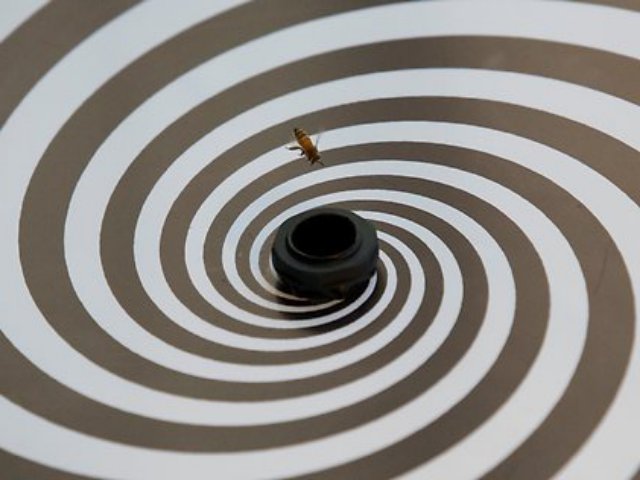 Australian neuroscientists studying bees’ flight have uncovered a surprisingly simple guidance strategy which could be used by UAS, stealth fighters and even spacecraft.Experiments at the Australian National University revealed that bees land safely by ensuring that the surface they are approaching expands at a constant rate within their field of vision.
Australian neuroscientists studying bees’ flight have uncovered a surprisingly simple guidance strategy which could be used by UAS, stealth fighters and even spacecraft.Experiments at the Australian National University revealed that bees land safely by ensuring that the surface they are approaching expands at a constant rate within their field of vision.
Mandyam Srinivasan, Professor of Visual Neuroscience at the University of Queensland, said bees were “doing something very neat and very elegant” that aeronautical engineers simply had not considered before. “If you come in (to land) at a constant speed, the image (of the landing strip) appears to expand faster as you get closer.
“But if you keep the rate of expansion of the image constant, you automatically slow down and by the time you make contact you’re moving at almost zero speed.”
Professor Srinivasan said engineers typically turned to lasers, radars, sonars and global positioning systems when they were designing landing systems. Bees relied on nothing more than a rudimentary sense of vision with low resolution, fixed focus and eyes so close together they were “like a Cyclops”.
Yet mathematical modelling showed that their “autopilot” technique worked on almost any type of surface – including walls and flowers – and required no information about airspeed or distance from destination. “Why didn’t we think of this before?” said Professor Srinivasan, whose team is already applying the technique to autonomously controlled model aircraft.
He said the university’s UAS could take off by themselves, control their orientation, fly at a constant height and perform “completely automated aerobatics”. But fully autonomous landings had so far eluded them.
Professor Srinivasan said aircraft could adopt the bee landing technique using a simple video camera, avoiding the need for expensive and heavy equipment. That meant it could be used by military planes that did not want to give themselves away using radar or sonar, and by spacecraft landing on other planets without GPS to guide them.
The study, just published in the journal Proceedings of the National Academy of Sciences, also involved researchers from the University of Melbourne, Lund University in Sweden and Bielefeld University in Germany.
The researchers checked their findings by training honeybees to land on discs with a spiral pattern. “When we spun the spiral to make it appear to expand, the bees hit the brakes because they thought they were approaching the board much faster than they really were,” Professor Srinivasan said.
“When we spun (it) the other way, the bees sped up, sometimes crashing into the disc.”
Professor Srinivasan said the bees’ landing technique was likely to be used by other insects and birds. In a separate study, his team hopes to programme UAS to copy birds’ techniques of avoiding collisions.
Source: The Australian
